Feeding P’s and Q’s
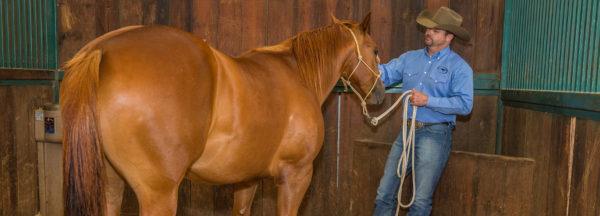
If Your Horse Acts Dangerous when You Go to Feed Him, Here’s How to Correct His Behavior
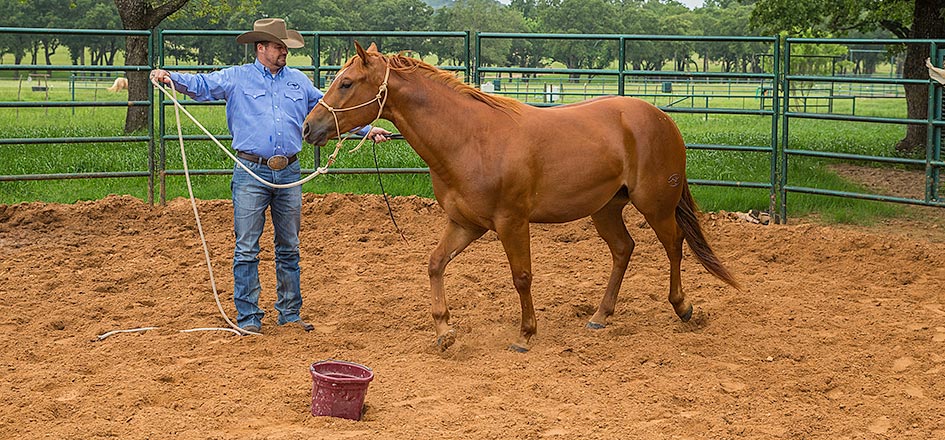
Step One
Fix this problem by working with your horse in a roundpen, where you have room to move his feet. Do not work with your horse in a stall, where you are confined to a small space. If the horse kicked out or became aggressive in some other way and you were in a stall, you could easily get kicked or pinned up against a wall.
Place a bucket of grain in the center of the roundpen. Then practice the Sending Exercise in front of the bucket of grain. You’ll direct the horse to move from one side of you to the other, yielding his hindquarters when he passes you.
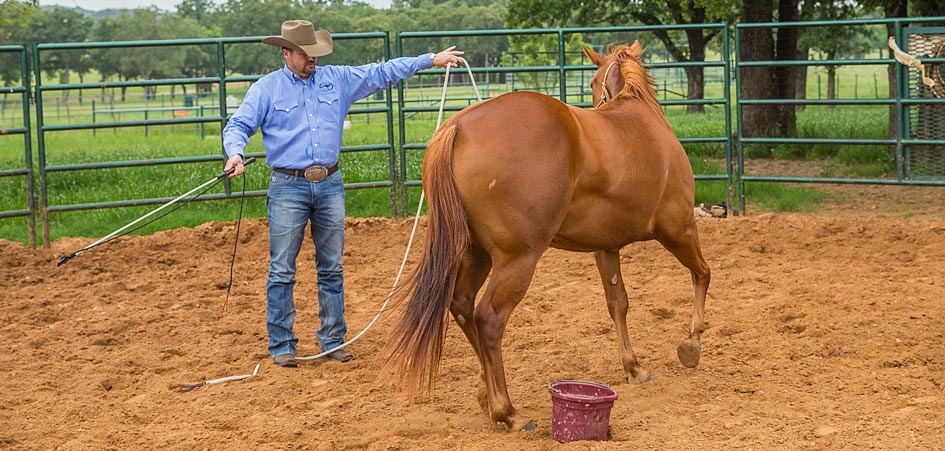
Step Two
You want the horse to realize that even though there’s a bucket of grain near him, you’re still able to control his feet. Horses can only think about one thing at a time. Your horse is either thinking about the grain and getting to it or listening to you and being respectful.

Step Three
Backing is one of the best exercises you can do with a horse that has developed bad behaviors at feeding time because it is the complete opposite of what he is doing. Most horses pin their ears and try to force you out of their space by running you off. Backing is a very humbling exercise for a horse because instead of him moving towards you, he has to back out of your space.
Think of what a herd of horses does to each other at feeding time and what the dominant horse does when he wants other horses to move. He pins his ears at them and escalates the pressure until the other horses move away from the feed.
When you ask your horse to back away from you, expect him to do it with energy in his feet. Hustle him backwards. Do not let him drag his feet and look off at his buddies in the pasture.
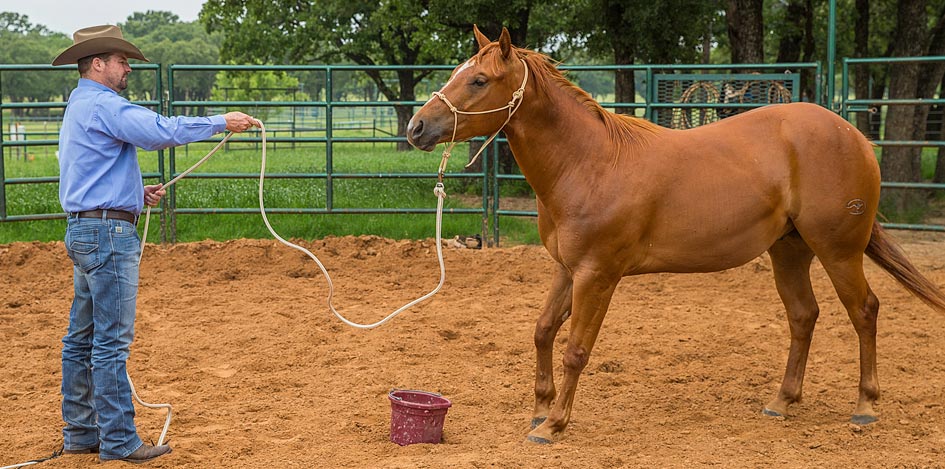
Step Four
After backing the horse away from you, invite him to come up to you and the grain. You want the horse to approach with a good attitude. In other words, look for him to approach you willingly with his ears pricked. He shouldn’t have his ears flattened against his head or his teeth barred with an expression on his face that says, “You’d better move or else!”
If he cops that attitude, immediately back him away from you. He’s only allowed in your space and next to the grain when he’s being respectful.
Of course, if your horse has been allowed to get away with a nasty attitude at feeding time for a while, he’s not going to immediately change his attitude and approach you with a pleasant expression on his face. You’re looking for small changes. With repetition, his attitude will improve and he will learn to focus on you instead of getting to the feed.
Continue backing the horse away from the feed and inviting him to come back up to you until he’s doing so with a “Yes, sir” attitude and responding well.
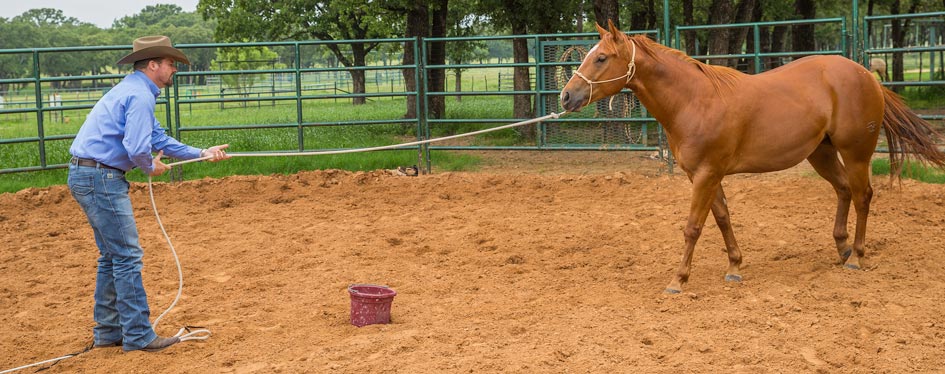
Step Five
After you’ve worked the horse next to the feed bucket and he’s responding well, let him rest next to it. Stop him so that he has two eyes on you and let him rest with slack in the lead rope. If he goes to look away from you, get his attention back on you by bumping on the lead rope. If he tries to eat the feed, immediately put his feet to work.
Dare the horse to get at the feed. Don’t babysit. You want him to learn that even when there’s feed around, you still call the shots. The feed is the last thing he should be interested in, because every time he tries to get some, you make him hustle his feet and sweat.

Step Six
When the horse aces the test in the roundpen, practice the same concept in the stall. Only move into the stall when the horse is responding well in the roundpen and you have his respect.
Dump the grain in the feed bin and position yourself next to it. Back the horse away from you. Again, ask the horse to back away from you with energy. You want his attention.
It All Comes Back to Respect
A horse that tries to run you over and pins his ears at you and bites you when you feed him is a disrespectful horse. It’s that simple. The best fix for any behavioral problem is to teach the horse the Fundamentals exercises. The horse crowding your space and being dominant is just a symptom of a cause. Earn his respect by moving his feet forwards, backwards, left and right, and the problem will likely take care of itself.
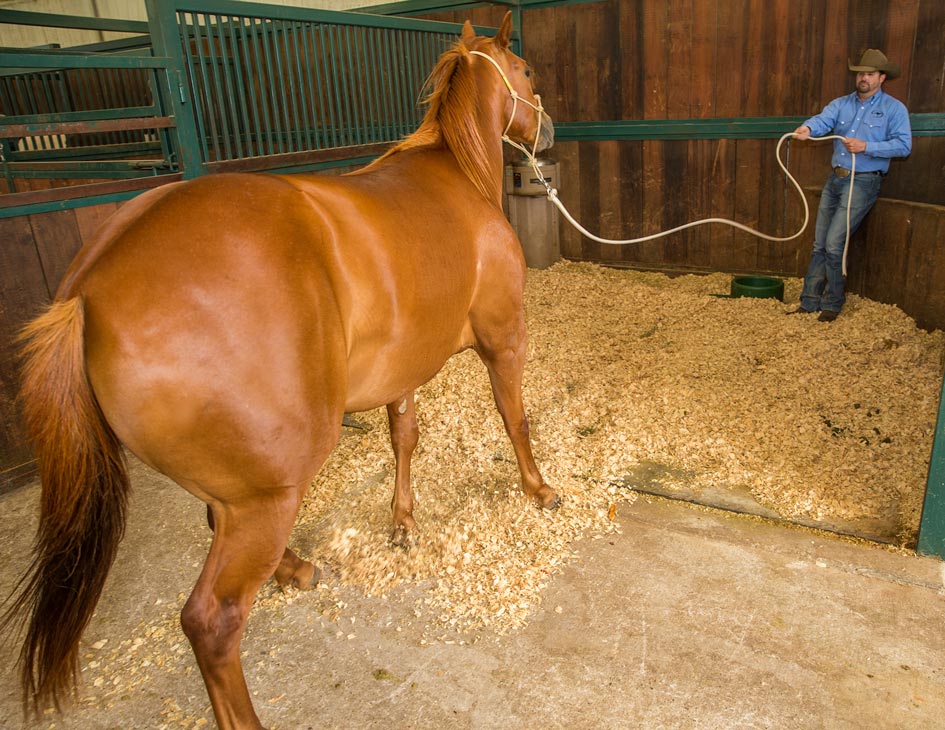
Step Seven
Then draw the horse up to you by combing your hands on the lead rope. When he reaches you, rub his face. If he pins his ears at you, immediately back him away from you. He’s only allowed in your space and around the feed when he’s being respectful.
Practice backing the horse away from you and drawing him up to you until each time you direct his feet, he willingly listens to you without acting snarly. If you did your homework well in the roundpen, it shouldn’t take long at all for your horse to have the same attitude in the stall.
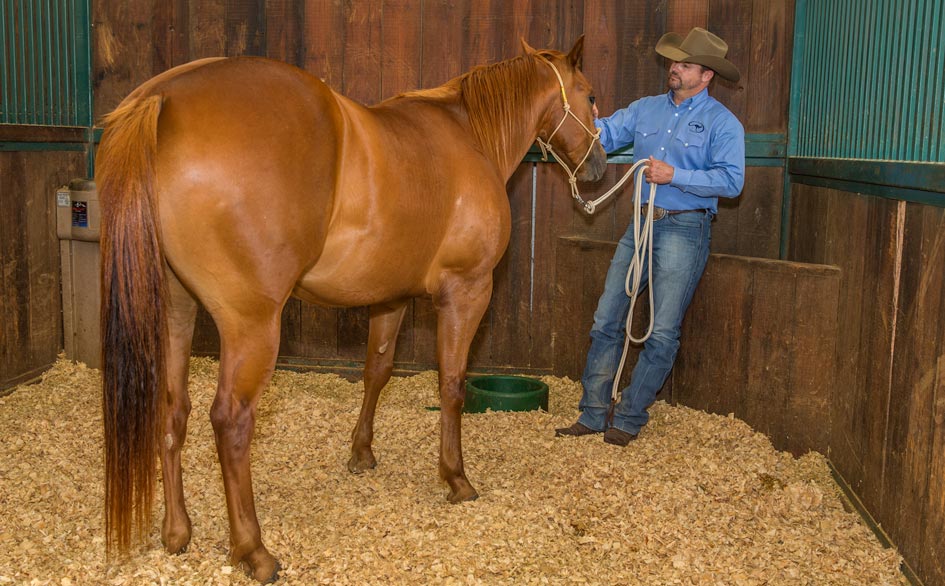
Step Eight
When you go into the stall to feed your horse, he should respect your space and wait for you to dump the grain or place the hay in the feeder. A horse that barges into your space to get the feed can easily injure you.
Want To Learn More? SIGN UP FOR OUR LOYALTY PROGRAM
Master your horsemanship training through Clinton’s step-by-step method videos by joining the No Worries Club today. Becoming a club member ensures you get VIP pricing on all of Clinton’s must-have training tools and resources. Plus, you’ll enjoy all the phenomenal benefits that come with club membership!


